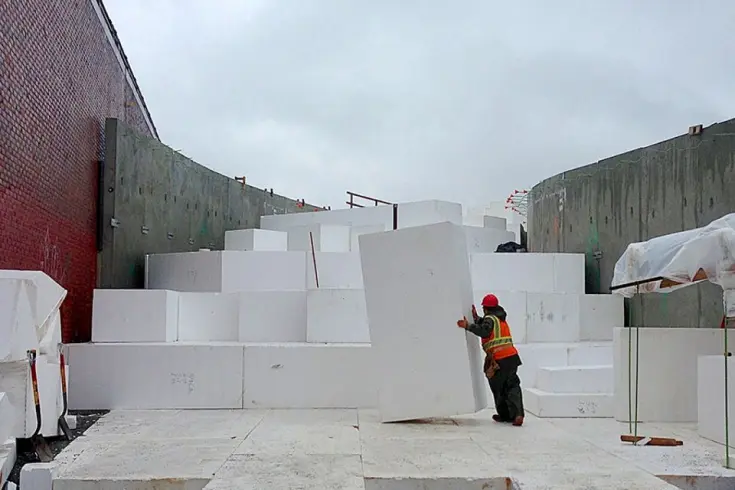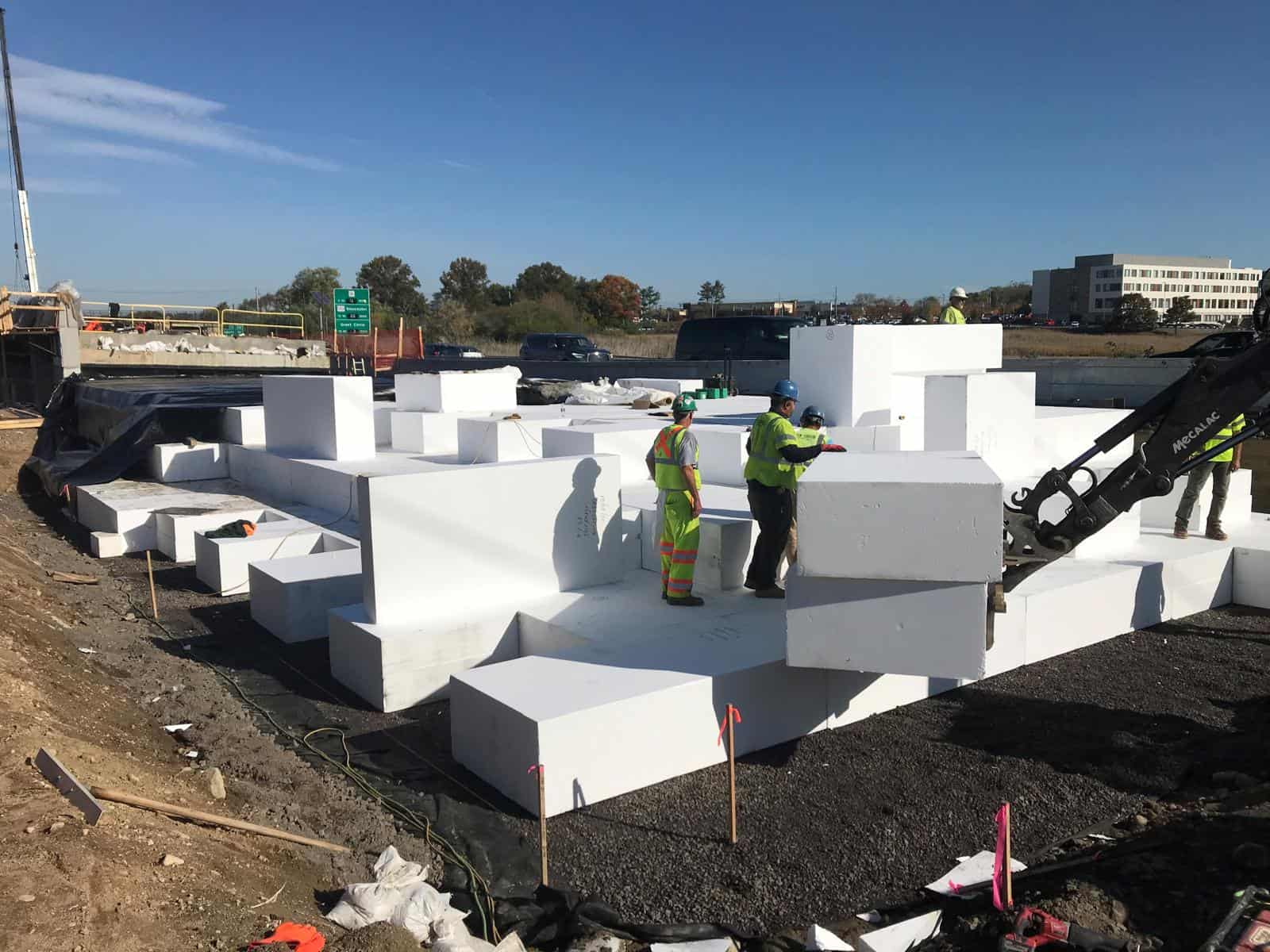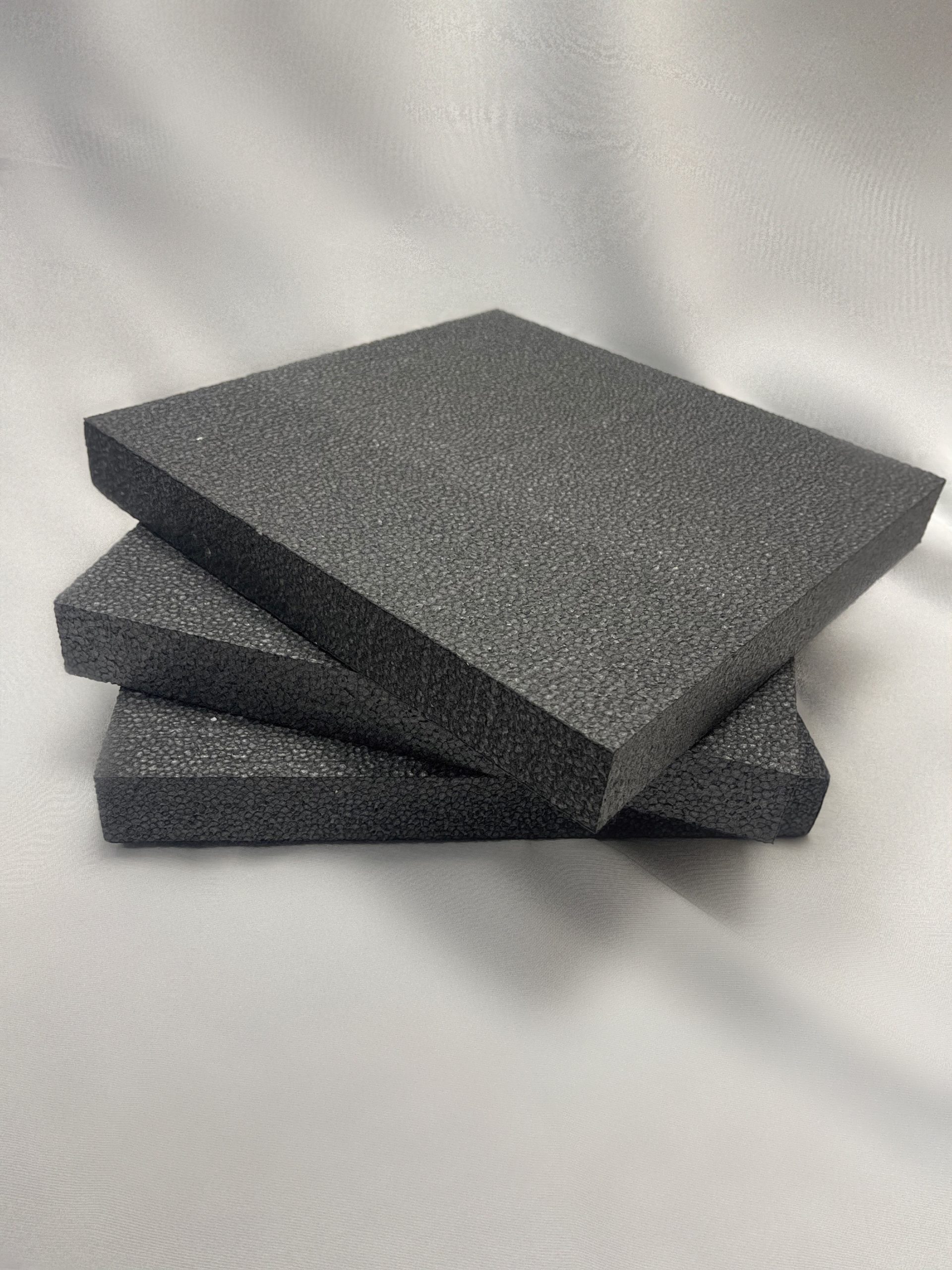Expanded Polystyrene geofoam weighs about 1% of the weight of soil. Add in the fact that this material weighs 10% the weight of alternative lightweight materials and you can see why it is used for buoyancy purposes. This is the perfect material to minimize loads on underlying and adjacent structures and soils. EPS geofoam blocks buoyancy calculations must be completely accurate for optimal functionality and ultimately, peace of mind.
Geofoam’s light weight and closed-cell structure makes it buoyant. However, care must be taken to ensure it proves reliant when used in or near water. Styrofoam billets can be used to calculate flotation requirements. Identifying the floating structure’s live loads and dead loads is the first step. The dead load is the framing, connections, decking, attached equipment and flotation units’ weight. Examples of equipment that is permanently attached include pumps, pipes, gangways and utilities.
The weight of the hardware and lumber has the potential to be between 10 pounds/ft² of structure and 15 pounds/ft² of structure. The live load is best understood as the full weight of the individuals who will be atop the floating structure, adding their aggregate weight to that of the dead load. In general, it is best for the structure to be engineered for around 40% submergence, ensuring the leftover 60% is used to support the design live load that has the potential to add 15 pounds/ft² to 30 pounds/ft² of weight to the underlying structure.
The Size and Number of Billets
The next step is to gauge the number of billets necessary to float the dead and live loads. Each unique billet size is capable of supporting a specific amount of weight at varying submergence depths. Consider the billet size you desire to use and the depth to which it will be submerged. Select the appropriate buoyant force for the billet at the specific submergence level you have in mind and divide the calculated amount of the dead load by the buoyant force.
As an example, consider a swimming raft with a dead load of 800 pounds. A billet that measures 10” by 24” supports about 290 pounds when there is 40% submergence. This means it would take three billets to adequately support the raft, assuming two-thirds of the billet will float atop the waterline. The available live load that can be supported on the swimming raft is 2,190 pounds with three billets submerged at 100%. The 800 pounds of dead load is subtracted from the 2,190 pounds of buoyancy, leaving 1,390 pounds of live load.
Important Points of Consideration
The next step is to gauge the number of square inches the cross-members of the structure must be placed in contact with the billets to properly transfer the weight of the structure to the billets. The billet contact area size calculation requires multiplying the structure’s dead load by the proper design factor in accordance with the anticipated wave action.
The contact area is applicable to the full structure. The goal is to gauge the contact area for the individual cross-members that bear weight on the billets. The figure is then divided two times by the total number of billets in use. In general, it is assumed two cross-members will be used for each billet.
As an example, consider a swimming raft positioned in sheltered waters. The dead weight of 800 is multiplied by the specific design factor for such sheltered waters. Let’s assume the design factor is 0.24. Multiply this amount by the 800 and you get 192 square inches worth of billet surface. The end result is 48 square inches of contact area for each billet that provides support. This number is reached by dividing 192 by 4. The billet will contact a minimum of two structure cross-members so each cross-member must have a bare minimum of 24 inches of contact with each billet.
What About the Bearing Area?
The buoyant force of a single buoyancy billet differs by the depth of submergence. The most common depths of submergence are 40%, 50%, 60% and 100%. When the term “freeboard” is used, it is measured in inches, representing the vertical distance between the billet’s top and the water level. In short, the buoyant force is the carrying capacity of a single billet at each specific submergence percentage.
Design factors also matter when it comes to load calculations. The design factor for each type of water is highly unique. As an example, large waters have a design factor of 0.40, average inland lakes have a design factor of 0.32 and sheltered waters have a design factor of 0.24.
The information detailed above is merely an estimate used for educational purposes. The accuracy and completeness of the calculations and recommendations detailed above might not prove 100% accurate or relevant for your unique load calculation. We assume no legal liability or legal responsibility for these figures and recommendations.
Rather, the goal of this content is to provide general guidelines to give prospective and current clients interested in eps geofoam a better idea of what goes into load calculations. If you are interested in more precise flotation requirements and dock designs, be sure to obtain structural engineer design plans specific to your unique application.
The contact area is applicable to the full structure. The goal is to gauge the contact area for the individual cross-members that bear weight on the billets. The figure is then divided two times by the total number of billets in use. In general, it is assumed two cross-members will be used for each billet.
As an example, consider a swimming raft positioned in sheltered waters. The dead weight of 800 is multiplied by the specific design factor for such sheltered waters. Let’s assume the design factor is 0.24. Multiply this amount by the 800 and you get 192 square inches worth of billet surface. The end result is 48 square inches of contact area for each billet that provides support. This number is reached by dividing 192 by 4. The billet will contact a minimum of two structure cross-members so each cross-member must have a bare minimum of 24 inches of contact with each billet.







